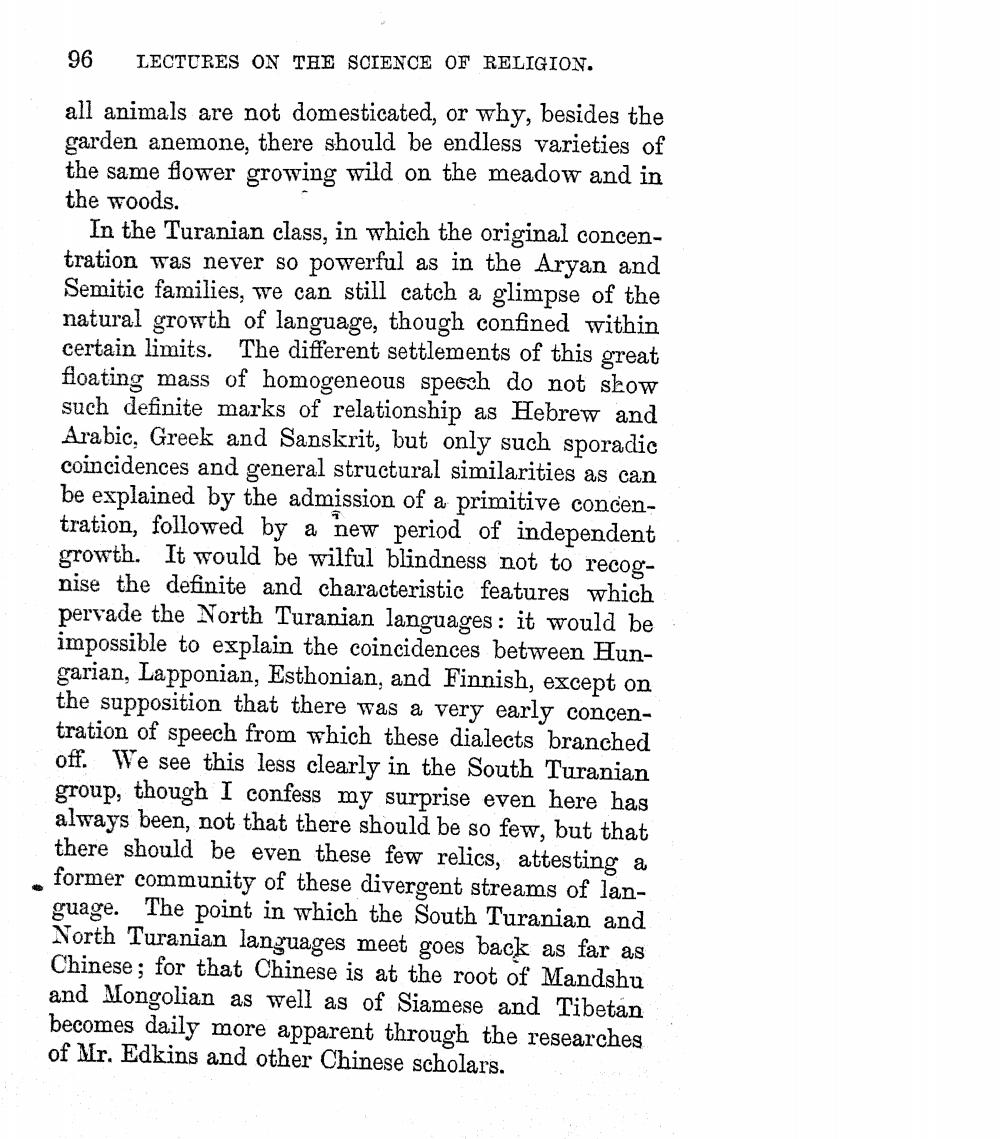________________
96
LECTURES ON THE SCIENCE OF RELIGION.
all animals are not domesticated, or why, besides the garden anemone, there should be endless varieties of the same flower growing wild on the meadow and in the woods.
In the Turanian class, in which the original concentration was never so powerful as in the Arvan and Semitic families, we can still catch a glimpse of the natural growth of language, though confined within certain limits. The different settlements of this great floating mass of homogeneous specch do not show such definite marks of relationship as Hebrew and Arabic, Greek and Sanskrit, but only such sporadic coincidences and general structural similarities as can be explained by the admission of a primitive concentration, followed by a new period of independent growth. It would be wilful blindness not to recognise the definite and characteristic features which pervade the North Turanian languages: it would be impossible to explain the coincidences between Hungarian, Lapponian, Esthonian, and Finnish, except on the supposition that there was a very early concentration of speech from which these dialects branched off. We see this less clearly in the South Turanian group, though I confess my surprise even here has always been, not that there should be so few, but that there should be even these few relics, attesting a former community of these divergent streams of language. The point in which the South Turanian and North Turanian languages meet goes back as far as Chinese; for that Chinese is at the root of Mandshu and Mongolian as well as of Siamese and Tibetan becomes daily more apparent through the researches of Mr. Edkins and other Chinese scholars.




